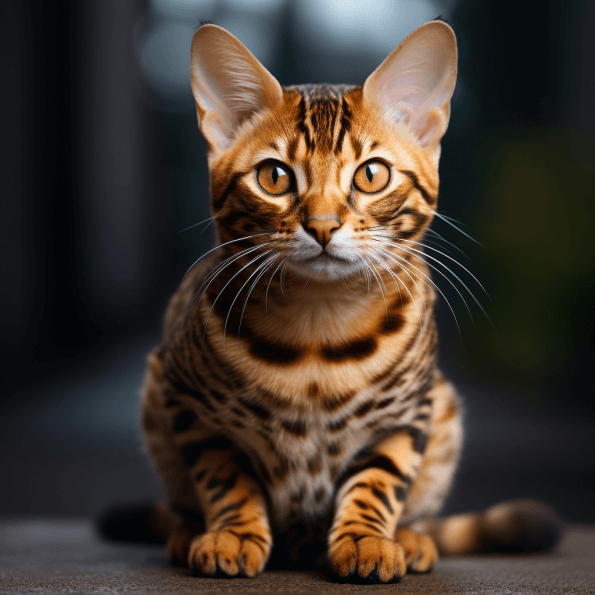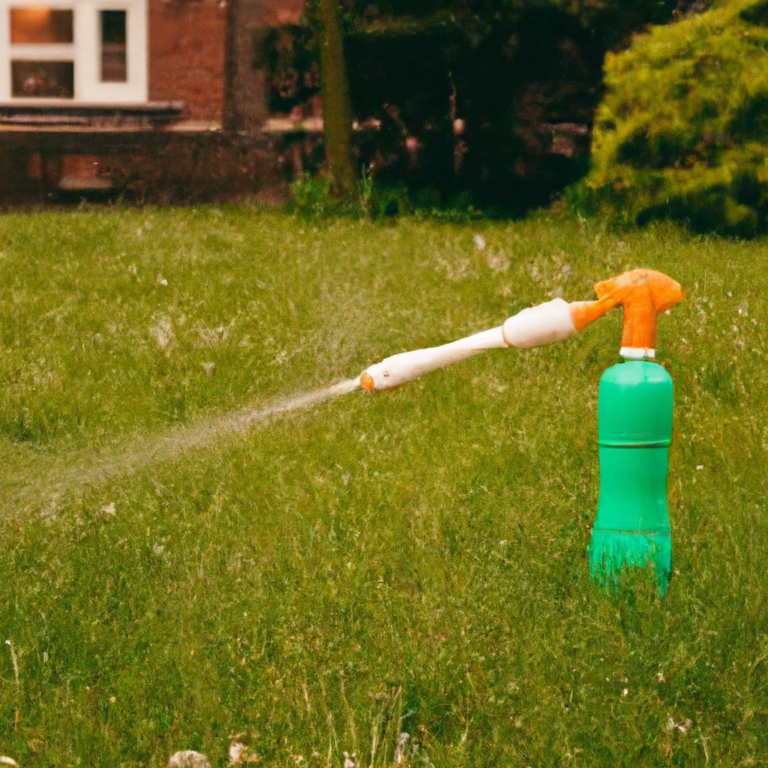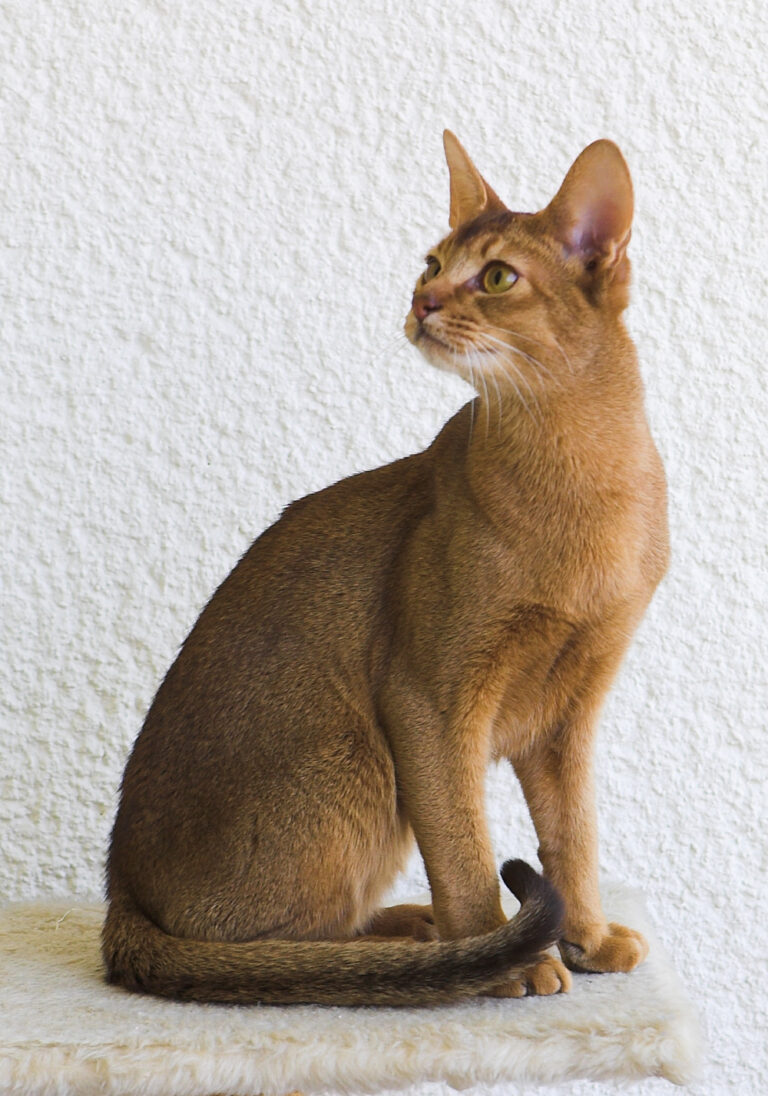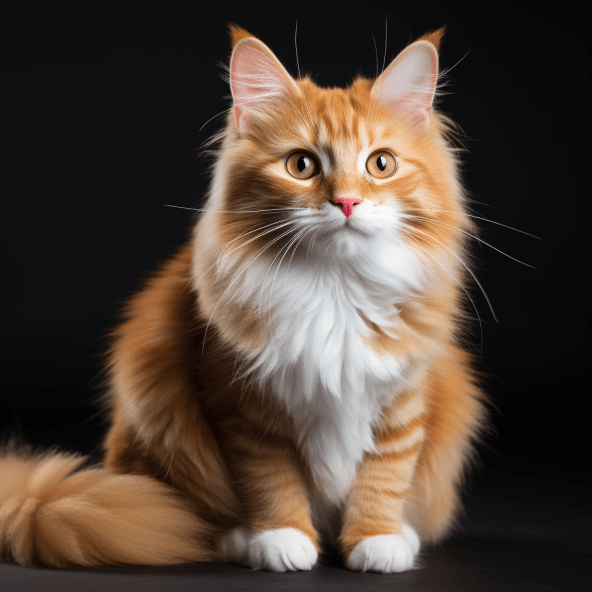Bengal – Cat Breeds
In the enchanting world of felines, the Bengal cat stands apart with its eye-catching charm and dynamic persona. The article provides an in-depth discourse on this particular breed, shedding light on the Bengal’s unique attributes and behavior. Expect a thorough exploration of this strikingly beautiful cat breed, being famous for its vivid, leopard-like markings and playful, affectionate nature. Get ready to learn about the Bengal’s history, engaging facts, grooming needs, dietary requirements, and much more, all aimed at assisting you in understanding this fascinating feline in all its glory.
Origin and History of Bengal Cats
Bengal cats are one of the most recognized feline breeds in the world. Their striking appearance and playful but gentle temperament have made them a favorite among cat enthusiasts.
Beginning of the Bengal breed
The Bengal breed has an interesting origin story. The breed was developed by selective breeding, starting in the 1960s, when a breeder named Jean Sudgen Mill wanted to create a domestic cat with the exotic appearance of a jungle cat. She crossbred an Asian leopard cat with a domestic shorthair, creating the first Bengal. The breed was named ‘Bengal’ after the scientific name of the Asian leopard cat.
Recognition in cat registries
Despite initial skepticism, Bengal cats are now recognized by several reputable cat registries. The first recognition came from The International Cat Association (TICA) in 1983. That was a major milestone for the breed, as it marked the start of Bengal’s reputation as a desirable breed.
Physical Characteristics of Bengal Cats
Size and weight
Bengal cats are medium to large in size, with males typically weighing between 10 to 15 pounds and females between 8 to 12 pounds. They are muscular and surprisingly heavy for their size.
Coat and colors
A Bengal cat’s most distinctive feature is its beautiful and diverse coat. It can come in a variety of colors, including brown, silver, blue, and black. The markings on the coat can be either spotted or marbled, always adding a hint of wild beauty to their appearance.
Distinct features
Bengal cats are well known for their large, almond-shaped eyes that can range in color from green to gold. They also have a broad head with rounded ears, a sturdy body, and a thick tail that tapers at the end.
Personality and Temperament of Bengal Cats
Typical personality traits
Despite their wild appearance, Bengal cats are charming and playful. They are curious and active, often requiring lots of toys and stimulation to keep them entertained. They are also known to be quite intelligent and expressive, producing a wide range of vocal sounds.
Interaction with humans and animals
Bengal cats are typically friendly towards humans, including strangers. They are also adaptable and can get along well with other pets if properly introduced. However, due to their active and playful nature, they are known to sometimes unintentionally play rough.
Typical behaviors
Bengals are lively and energetic cats, known for their love of climbing and high places. Don’t be surprised to find your Bengal cat perched on your bookshelf or clinging to your door frame.
Health and Lifespan of Bengal Cats
Average lifespan
The average lifespan of a Bengal cat is around 12 to 16 years, provided they are given a balanced diet, regular exercise and regular veterinary check-ups.
Common Health Issues
Like any breed, Bengals can potentially suffer from certain health problems. These can include dental disease, heart disease, and obesity, particularly if they are not given enough exercise.
Genetic Disorders
Some Bengal cats are prone to certain genetic disorders, such as progressive retinal atrophy (a condition that can lead to blindness) and hypertrophic cardiomyopathy (a heart condition).
Care and Grooming of Bengal Cats
Grooming needs
Fortunately, Bengal cats have a short, sleek coat that is relatively easy to groom. They are known to keep themselves quite clean, but a weekly brush can help to remove any loose hairs and reduce the chance of hairballs.
Exercise and play requirements
As mentioned, Bengals are very energetic and love to play. They need plenty of physical activity to keep them healthy and happy. Interactive toys, climbing trees, and even leash walks can be good ways to help your Bengal burn off energy.
Diet and nutrition
Bengal cats require a balanced diet that includes a good mix of proteins, fats, and carbohydrates. High-quality commercial cat food can usually provide this, although some Bengal owners opt to include raw foods or homemade meals.
Bengal Cats and Families
Compatibility with kids
Bengal cats can be a great addition to families with kids. They are often gentle and affectionate, although younger children should always be supervised when interacting with any cat.
Compatibility with other pets
Bengals can also coexist happily with other pets. They are typically not aggressive, but their playful nature can sometimes be overwhelming for more reserved animals. It’s always best to slowly introduce new animals to ensure a smooth transition.
Recommended home environment
Bengal cats thrive in environments where they can explore, play, and burn off their energy. A secure backyard can be a plus. Also, the presence of high perches or cat trees in the house can help them fulfill their love for climbing.
Training and Behavioral Issues in Bengal Cats
Trainability
Bengal cats are intelligent animals which makes them relatively easy to train. They respond well to positive reinforcement such as treats and praise.
Common behavioral concerns
That being said, due to their high energy levels and curious nature, Bengal cats are known for their mischievous behaviors. They might knock things over or explore places you’d prefer they leave alone.
Tips for training Bengal cats
When it comes to training, consistency is key. Start training your Bengal cat at a young age, establish clear rules, and reward good behavior.
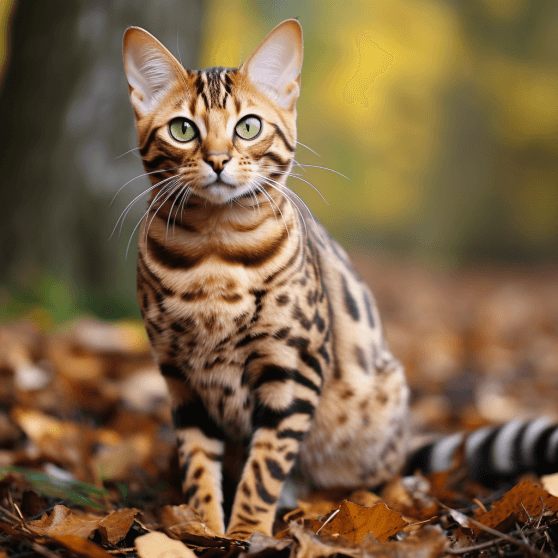
Breeding Bengal Cats
Breeding process
Breeding Bengal cats should be left to the professionals. It’s important that breeders have a deep understanding of the breed and are aware of potential genetic issues that can arise.
Litter size
A healthy Bengal cat usually gives birth to a litter of 4-5 kittens.
Raising Bengal kittens
Raising Bengal kittens can be quite enjoyable but also a challenge given their playful and active nature. It’s important to start socializing the kittens at a young age to ensure they grow up to be friendly adults.
Potential Costs of Owning a Bengal Cat
Initial purchase or adoption cost
The cost to purchase a Bengal cat can vary greatly depending on many factors, but generally, they are considered quite expensive due to their unique breed. Adoption fees are usually less expensive.
Ongoing care costs
Be prepared for ongoing costs for food, grooming supplies, toys, and routine veterinary care. These costs can add up but are necessary to keep your Bengal healthy.
Potential healthcare costs
Bengal cats can have health issues that may require veterinary care above and beyond regular check-ups and vaccinations. It’s a good idea to account for potential healthcare costs when considering this breed.
Frequently Asked Questions about Bengal Cats
Are Bengal cats hypoallergenic?
Technically, no cat is truly hypoallergenic. However, Bengal cats are known to produce fewer allergens than some other breeds, which can make them a better choice for people with allergies.
Do Bengal cats make good pets?
Bengal cats can make great pets for the right person or family. They are friendly, playful, and intelligent, making them a fun and interactive companion.
How big do Bengal cats get?
Bengal cats are on the larger side for domestic cats. Males typically weigh between 10 to 15 pounds, and females between 8 to 12 pounds.
Do Bengal cats like to swim?
Many Bengal cats are actually quite fond of water, which is rare for cats! They might enjoy playing with running water from a faucet or even join you for a swim in a pool. However, remember that each cat is unique and not all Bengals may like water.

